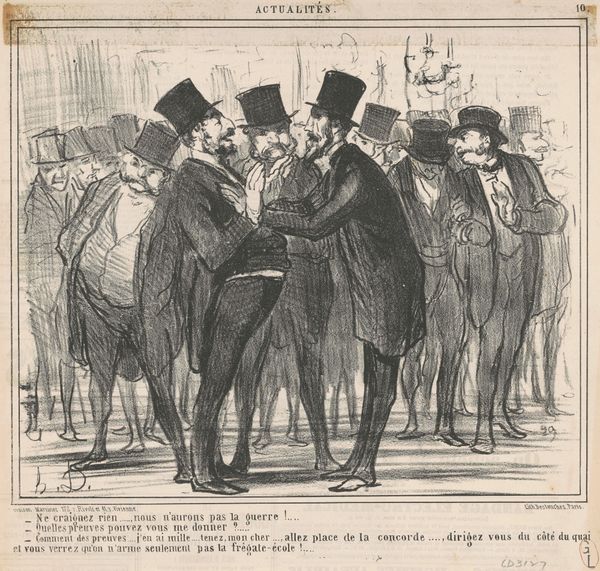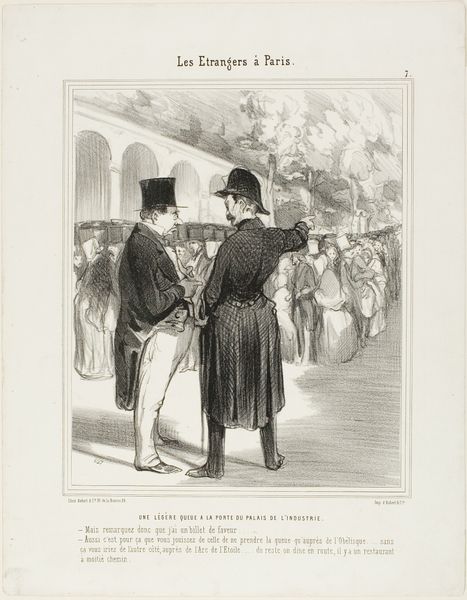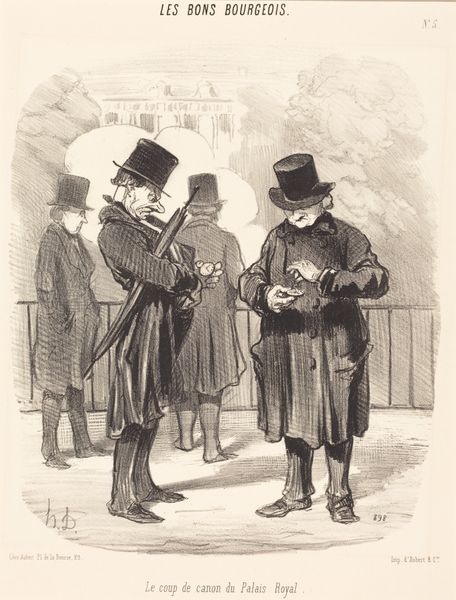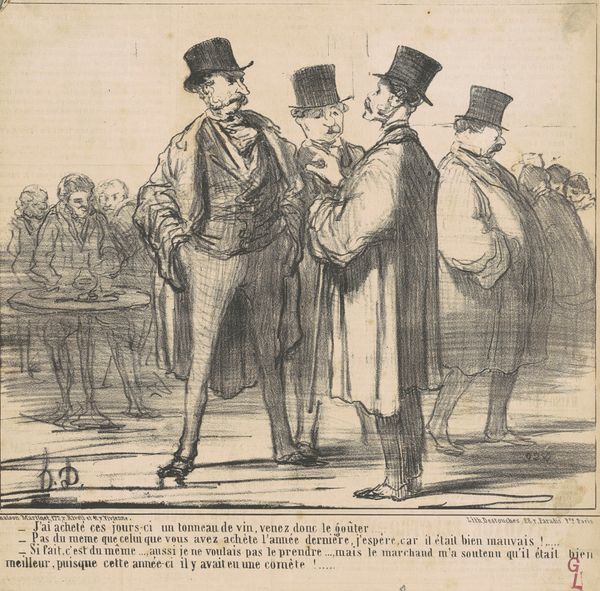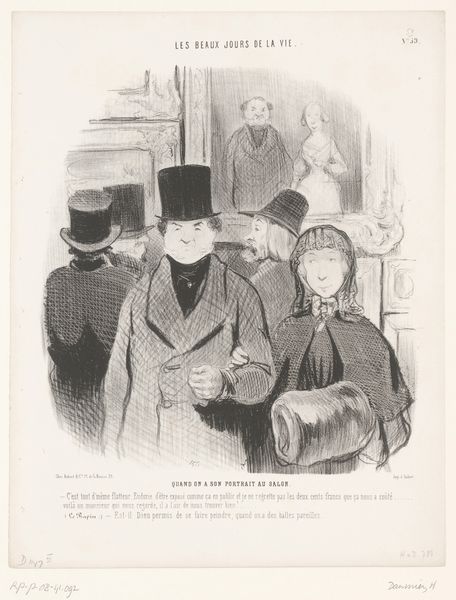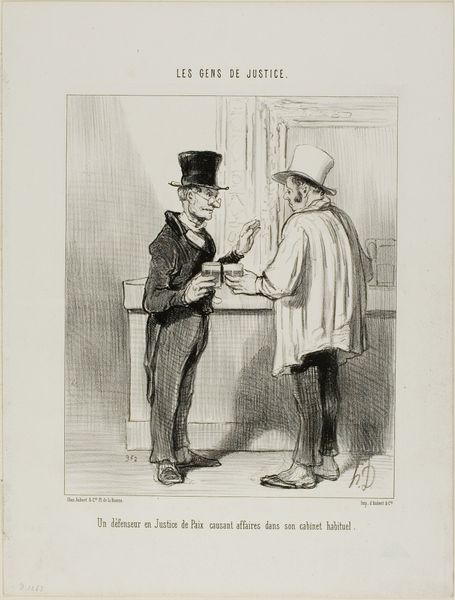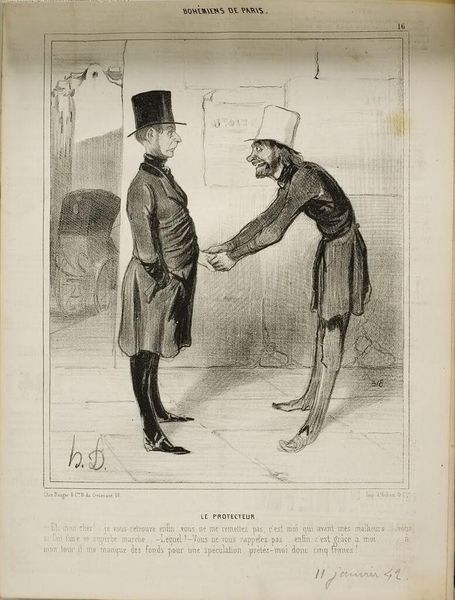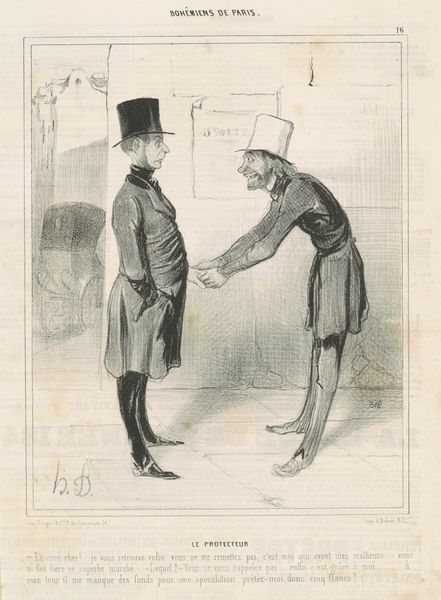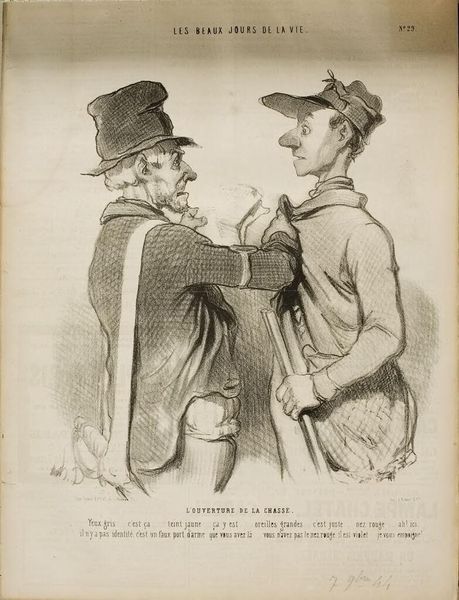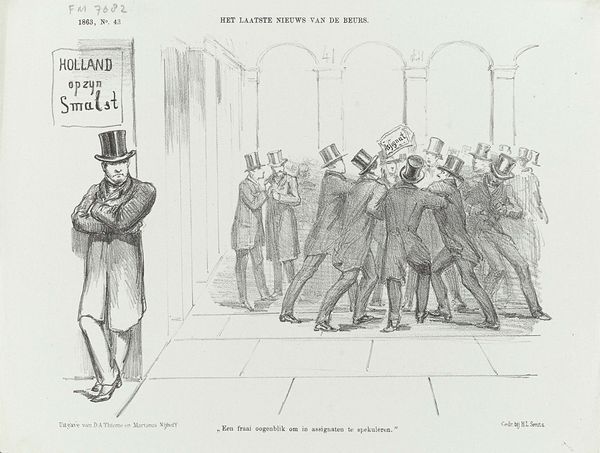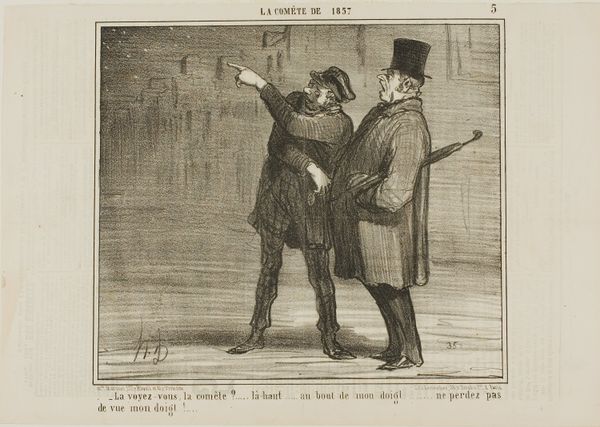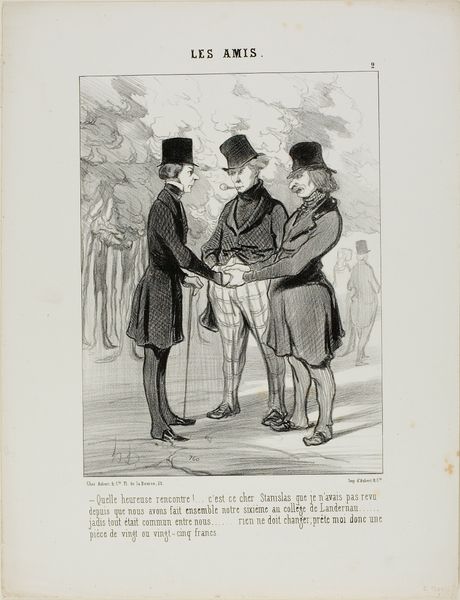
Spotprent op de onverkoopbare aandelen Kanaalmaatschappij, 1863 1863
0:00
0:00
drawing, etching, pen
#
drawing
#
still-life-photography
#
dutch-golden-age
#
etching
#
caricature
#
pen
#
genre-painting
#
realism
Dimensions: height 275 mm, width 215 mm
Copyright: Rijks Museum: Open Domain
Curator: Here we have a caricature etching by Johan Michael Schmidt Crans, titled "Spotprent op de onverkoopbare aandelen Kanaalmaatschappij, 1863," created in 1863 with pen and etching. What are your initial impressions? Editor: The mood strikes me as rather… tense. The stark black-and-white contrast enhances the sharp lines of the figures, their expressions etched with what appears to be frustration. Note the crowding, too, adding to the visual pressure. Curator: Indeed. Crans created this as a satirical commentary on the financial climate of the time, specifically targeting the unsellable shares of the Kanaalmaatschappij, a canal company. Understanding the history surrounding Dutch financial speculation is essential. It's about power dynamics, the construction of value, and, of course, potential failures. Editor: You see how the artist utilizes a kind of realism to depict the scene, but with heightened, almost grotesque, exaggerations? The elongated faces and strained gestures…It's brilliant how those formal elements contribute to the caricature's overall message. Curator: Absolutely. He's highlighting the social anxieties surrounding the potential collapse of the company and skewering the men—presumably wealthy investors or brokers—caught in its web. The location depicted, "Effectenhoek te Amsterdam," reinforces the economic elite under fire. This can be related to today's neoliberal context: how is financial speculation framed, and who carries risk's social burden? Editor: Consider the visual language, the interplay of light and shadow defining form. It creates depth and emphasizes the characters' psychological states. The use of etching adds a layer of historical context—recalling an era deeply tied to meticulous detail. The drawing method makes it particularly suited to express precision. Curator: The drawing leaves an incisive visual record. The print is also rich in information about the relationship between art, capital and social critique in 19th-century Netherlands. I think that in light of today’s struggles around equality, access and representation, the artist leaves open the following question: "who pays, who wins?" Editor: A worthwhile observation that moves beyond surface aesthetics. Understanding the underlying narrative allows one to appreciate both the technical skills of the artwork and its contextual importance. Curator: Exactly! Editor: Yes, definitely some insightful elements in that perspective. Thank you.
Comments
No comments
Be the first to comment and join the conversation on the ultimate creative platform.
